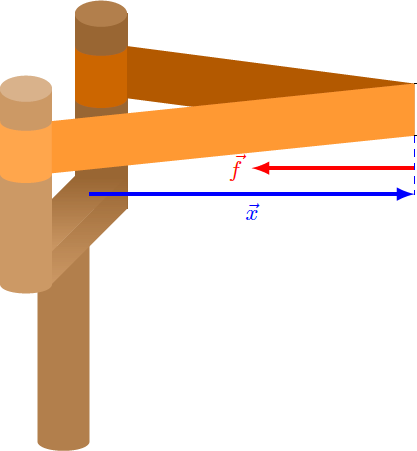Rubber Physics (Part 9)

Suppose you want to fire a ball with a slingshot at the highest possible speed. What is the best technique for this? Assume that the maximum deflection of the rubber band is the same in all cases.
This section requires Javascript.
You are seeing this because something didn't load right. We suggest you, (a) try
refreshing the page, (b) enabling javascript if it is disabled on your browser and,
finally, (c)
loading the
non-javascript version of this page
. We're sorry about the hassle.
Note, that according to our Hooke's law, the force constant k increases linear with the temperature T : f = − k ( l − l 0 ) = − b T ( l − l 0 ) If we stretch the rubber very quickly and it heats up, the associated force is significantly larger than in the case where the temperature is kept constant. Thus, in the adiabatic process, a larger elastic energy is stored, so that the ball receives a higher speed when firing. It can also be considered that the energy is stored partly in the form of thermal energy in the rubber. This contribution is lost if the rubber is allowed to cool to ambient temperature. Therefore, you should draw the rubber band as fast possible and release it immediately in order to minimize energy losses.
We can also calculate the mechanical work, Δ W S and Δ W T , for the adiabatic and the isothermal process, respectively. In case for the isothermal process with T = T 0 we get Δ W T = − ∫ l 0 l f d l = + 2 b T 0 ( l − l 0 ) 2 In the adiabatic case is Δ S = 0 , so the first law of thermodynamics is given by Δ W S = Δ U = C l Δ T = C l T 0 ( exp ( 2 C l b ( l − l 0 ) 2 ) − 1 ) If we use the power series representation exp ( x ) = ∑ n = 0 ∞ n 1 x n for the exponential function we can do the following approximation Δ W S ≈ C l T 0 ( 1 + ( 2 C l b ( l − l 0 ) 2 ) + 2 1 ( 2 C l b ( l − l 0 ) 2 ) 2 − 1 ) = 2 b T 0 ( l − l 0 ) 2 + 8 C l b 2 T 0 ( l − l 0 ) 4 = Δ W T + > 0 8 C l b 2 T 0 ( l − l 0 ) 4 Therefore, we can conclude Δ W S > Δ W T
The series on the physics of rubber has now come finally to an end with this problem. Who has held out to the end, has earned a small reward and can enjoy some real slingshot shot action by clicking on the video links here and here .